Discover 35 hidden attractions, cool sights, and unusual things to do in Isle of Portland (United Kingdom). Don't miss out on these must-see attractions: Weymouth and Portland National Sailing Academy, Portland Bill Lighthouse, and Portland Castle. Also, be sure to include Portland Cenotaph in your itinerary.
Below, you can find the list of the most amazing places you should visit in Isle of Portland (England).
Table of Contents
Weymouth and Portland National Sailing Academy
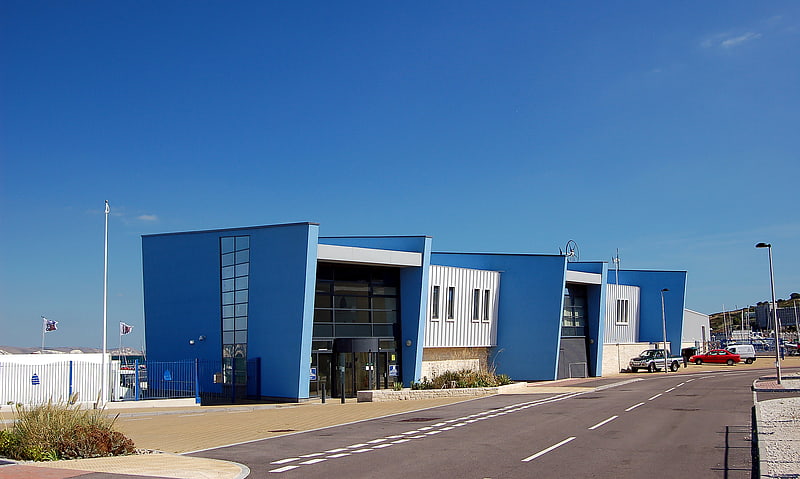
Event venue in England. The Weymouth and Portland National Sailing Academy is a centre for the sport of sailing on the Isle of Portland, Dorset, on the south coast of England. The academy building is located in Osprey Quay on the northern tip of the island, and the waters of Portland Harbour and Weymouth Bay, adjacent to the site, are the main areas used for sailing. Local, national and international sailing events have been held at the site since it was opened in 2000, and in 2005 WPNSA was selected to host the sailing events at the 2012 Olympic and Paralympic Games.[1]
Address: Osprey Quay, DT5 1SA Portland
Portland Bill Lighthouse
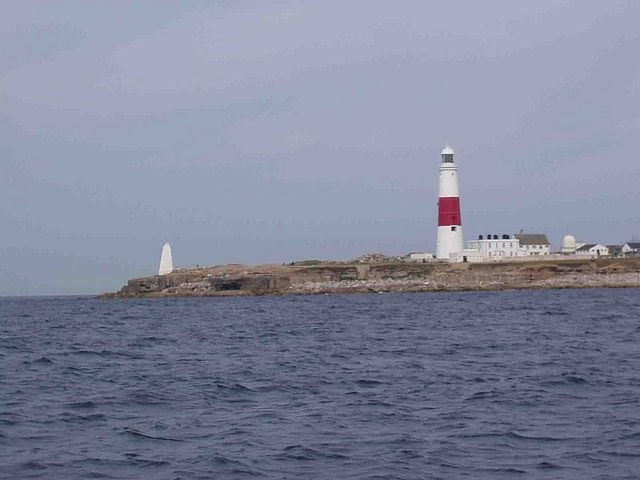
Lighthouse in England. Portland Bill Lighthouse is a functioning lighthouse at Portland Bill, on the Isle of Portland, Dorset, England. The lighthouse and its boundary walls are Grade II Listed.
As Portland Bill's largest and most recent lighthouse, the Trinity House operated Portland Bill Lighthouse is distinctively white and red striped, standing at a height of 41 metres (135 ft). It was completed by 1906 and first shone out on 11 January 1906. The lighthouse guides passing vessels through the hazardous waters surrounding the Bill, while also acting as a waymark for ships navigating the English Channel.[2]
Address: Portland Bill Rd, DT5 2JT Portland
Portland Castle
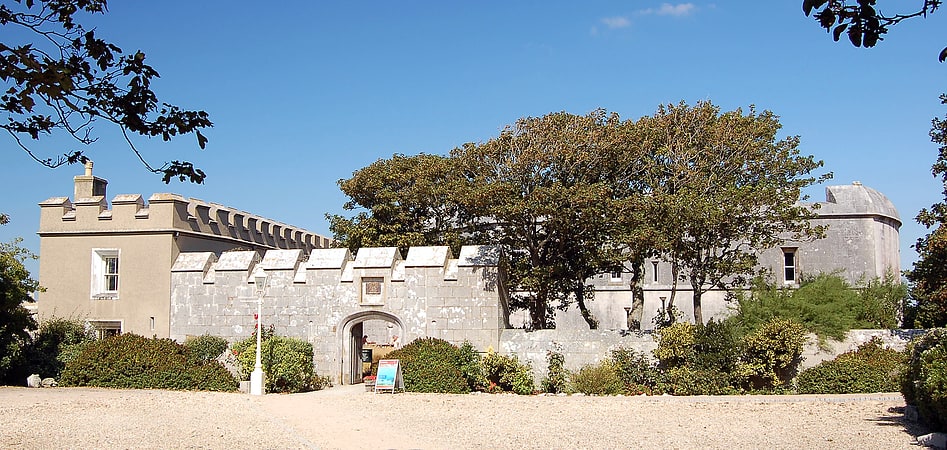
Castle in Castletown, England. Portland Castle is an artillery fort constructed by Henry VIII on the Isle of Portland, Dorset, between 1539 and 1541. It formed part of the King's Device programme to protect against invasion from France and the Holy Roman Empire, and defended the Portland Roads anchorage. The fan-shaped castle was built from Portland stone, with a curved central tower and a gun battery, flanked by two angular wings. Shortly after its construction it was armed with eleven artillery pieces, intended for use against enemy shipping, operating in partnership with its sister castle of Sandsfoot on the other side of the anchorage. During the English Civil War, Portland was taken by the Royalist supporters of King Charles I, and then survived two sieges before finally surrendering to Parliament in 1646.
Portland continued in use as a fort until the end of the Napoleonic Wars in 1815, when it was converted into a private house. Fresh concerns over invasion led to the War Office taking it over once again in 1869, but the castle was not rearmed and was instead formed accommodation for more modern neighbouring fortifications. During the First and Second World Wars it was used as offices, accommodation and as an ordnance store. In 1949, the War Office relinquished control, and in 1955 it was opened to the public by the state. In the 21st century it is managed by English Heritage and operated as a tourist attraction, receiving 22,207 visitors in 2010. Historic England consider the castle to form "one of the best preserved and best known examples" of King Henry's forts.[3]
Address: Portland Castle Liberty Road, DT5 1AZ Isle of Portland
Portland Cenotaph

Memorial park in England. The Portland Cenotaph is a war memorial located on the Isle of Portland, Dorset, England. It is situated at New Ground, looking down to Underhill of the island and overlooking Chesil Beach, as it stands in front of Portland Heights Hotel. The monument is dedicated to the local soldiers who died during both the First and Second World Wars. It has been a Grade II Listed Monument since May 1993.[4]
Tout Quarry
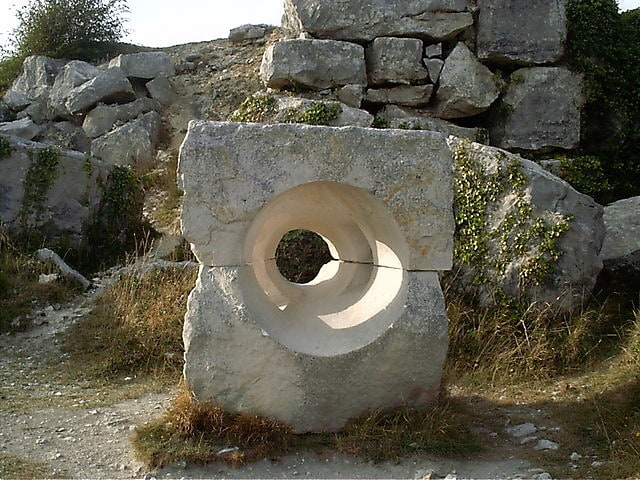
Sculpture museum in England. Tout Quarry, now known as Tout Quarry Sculpture Park and Nature Reserve, is a sculpture park and nature reserve based within a disused quarry on the Isle of Portland, Dorset, England. It is located within the north-west corner of Tophill. The sculpture park has existed since 1983, while the site also become a nature reserve around 2004. To date, the quarry displays a collection of various carvings and works in Portland stone.[5]
Address: Hope Square, Isle of Portland
Cave Hole
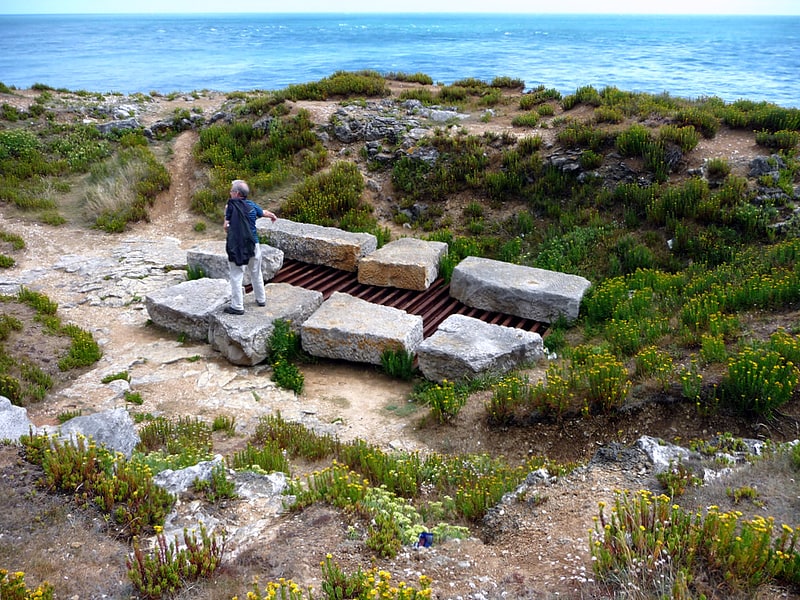
Cave in England. Cave Hole is a large cave on the south east side of the Isle of Portland, a large peninsular in Dorset, England. It has a blowhole and a wooden crane, known as Broad Ope Crane on the cliff top. It is 1⁄2 mile north-east of Portland Bill, has an interior measuring 50 feet square and 21 feet high.
Cave Hole was earlier known as Keeve's Hole and regularly featured in recorded history and wider lore of smuggling. It is made up of a series of caves with steep roof sections, tunnels and ledges, and represents the first stage in cave collapse. The cave and its surrounding area is frequently used for deep-water soloing. The cave's blowhole, which stretches far into the solid rock, was formed when the roof of the cave was broken through to the surface. For the protection of people looking down into the cave, an iron grill has been installed across it. Whenever a powerful easterly gale occurs, the sea shoots up through the fissures.
Various small craft have been driven into the cave by east and south easterly gales, the largest of which was a 40-ton vessel from Cowes in 1780. Frank and Ann Davison were shipwrecked at the cave in 1949. The pair had set sail for the West Indies. Frank drowned but Ann managed to scramble ashore. A local tale has long reputed that the cave is home to Roy Dog - a black dog, "as high as man, with large fiery eyes, one green, one red". It is said that the creature emerges from the watery depths to seize any traveller passing by Cave Hole and drags them down into his dark watery domain.[6]
Chiswell Earthworks
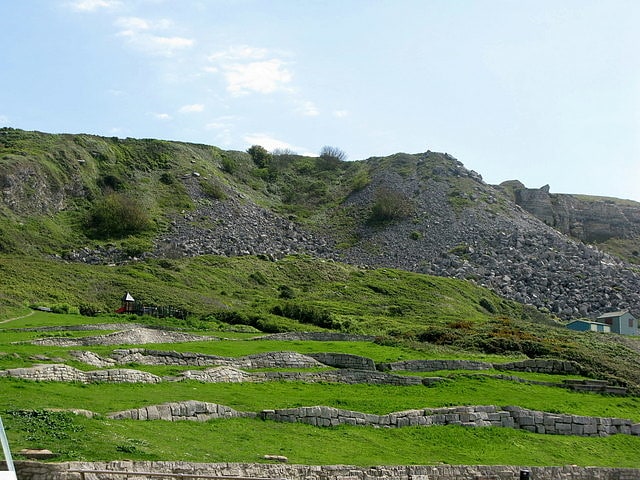
Sculpture. Chiswell Earthworks is a land sculpture, located on the Isle of Portland, Dorset, England. It is found above Chesil Beach's most southerly part Chesil Cove, at the end of the promenade sea wall, towards West Weares. It was created by John Maine RA, between 1986 and 1993.[7]
Rufus Castle
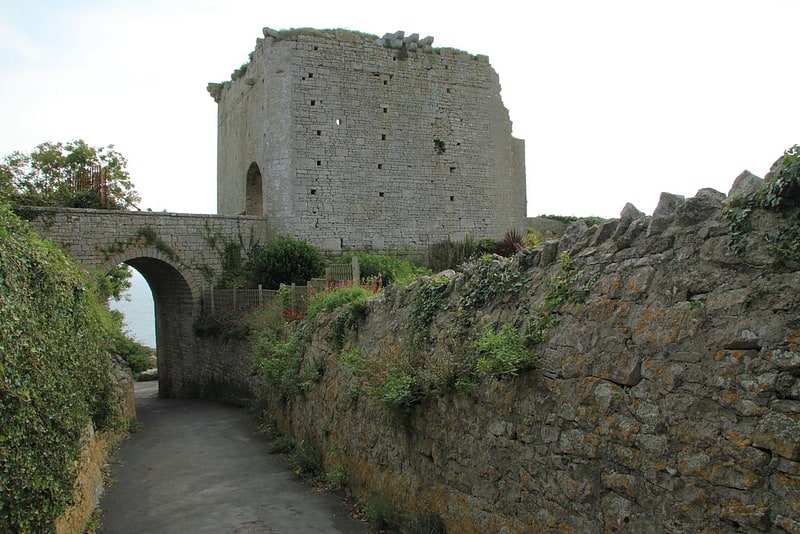
Castle in England. Rufus Castle, also known as Bow and Arrow Castle, is a partially ruined castle overlooking Church Ope Cove on Portland, England. Its name derives from King William II, known as William Rufus, for whom the original castle was built.
The existing structure dates largely from the late 15th century, making it Portland's oldest castle. Built on a pinnacle of rock, some of the original structure has been lost to erosion and collapse over the years.
The remaining castle appears to have been the keep of a stronghold, the foundation of which was much above the top of the church tower of St Andrews which lay in the valley below. The pentagonal tower of the castle has late Medieval gunholes, but rests on an earlier foundation to the north and stepped plinth to the west which may have been a 12th-century keep. Remains include parts of the keep, sections of wall with gun ports and a 19th-century round-arched bridge across Church Ope Road.
The castle, including its bridge, has been a Grade I listed building since January 1951. It is one of three buildings on Portland to be Grade I listed. In addition to this, the castle has become a scheduled monument under the Ancient Monuments and Archaeological Areas Act 1979.
Rufus Castle looks out over the Shambles sandbank, approximately 3 miles (5 km) out to sea, one of the most feared navigational hazards in the area. It was here in 1805 that the East Indianman, the Earl of Abergavenny, foundered and eventually sank, killing 263. Among the dead was the captain of the ship, John Wordsworth, brother of the Romantic poet William Wordsworth. The poet immortalised the catastrophe and death of his brother in his poem: To the Daisy.
It was beyond the Shambles that the Battle of Portland took place in 1653 between the English navy led by General at Sea Robert Blake fighting the Dutch Navy led by Lieutenant-Admiral Maarten Tromp.
There is no public access to the castle as it is privately owned, though it can be seen well from public footpaths along the coast.[8]
Royal Navy Cemetery

Cemetery in England. Royal Naval Cemetery is a cemetery on the Isle of Portland, Dorset, England. The site overlooks Portland Harbour, and is found below the main entrance to the Verne Citadel. As the name suggests, the graveyard holds deceased servicemen and officers of Portland's Royal Navy which was stationed at the island until 1995. The cemetery holds 140 identified casualties in total to date, and is owned by the Ministry of Defence.
The cemetery was first laid out during the 19th century. With the establishment of a naval base at Portland Harbour, and the Verne Citadel fortification, a number of fatalities began to occur. Burials of the World War I (1914-1918) total 65, where 5 remain unidentified. The majority of World War II (1939-1945) graves are together in the Church of England section, near the Cross of Sacrifice. Of the buried, 10 are unidentified, whilst there are burials for 1 Norwegian Merchant Navy seaman and 12 German airmen. The cemetery remains well looked after to date and features a small amount of newer burials of recently deceased servicemen.[9]
United Reformed Church
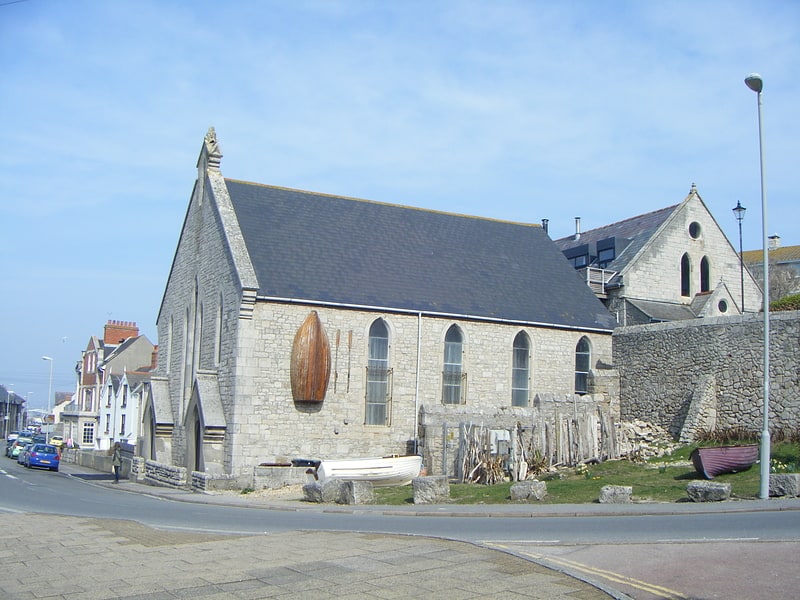
Church in England. The United Reformed Church is a former United Reformed Church in Chiswell, on the Isle of Portland, Dorset, England. It was founded in 1825 and closed in 2009.[10]
Trinity House Obelisk
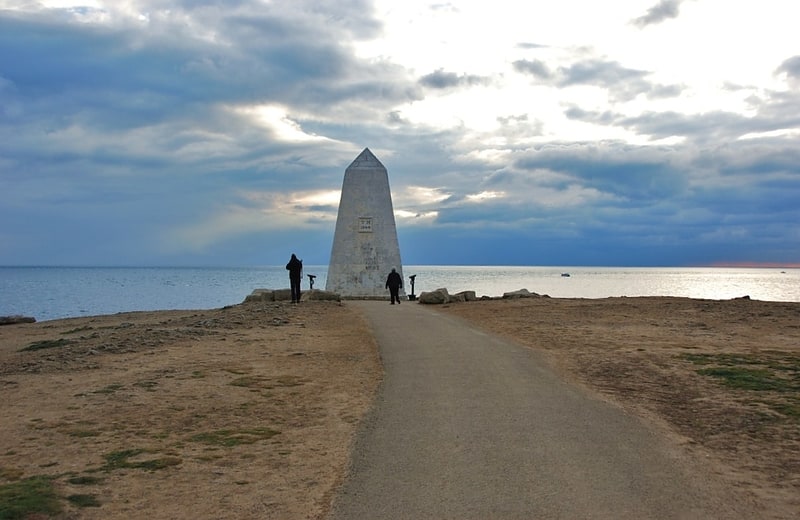
Monument in England. The Trinity House Obelisk, also known as the Trinity House Landmark, is a 19th-century obelisk located at Portland Bill, on the Isle of Portland, Dorset, England. Built as a daymark, it has been Grade II Listed since 1978.
The obelisk was built in 1844 to warn ships off the coast of Portland Bill. It stands at the southern tip of the Isle of Portland, acting as a warning of the low shelf of rock extending 30 metres south into the sea. The obelisk is made of Portland stone and is seven metres in height. It is inscribed "TH 1844" on its north face. The monument was saved from threatened demolition in 2002 after Trinity House deemed it too expensive to maintain.[11]
St Andrew's Church
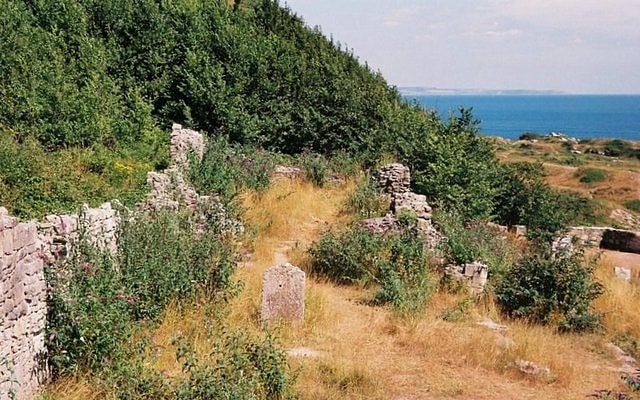
Anglican church in England. St Andrew's Church is a ruined church located above Church Ope Cove on the Isle of Portland, Dorset, England. St Andrew's was Portland's first parish church and remained as such until the mid-18th century. It is now one of the island's prime historical sites, and is a Grade II* Listed Building and a Scheduled Monument. The southern retaining wall of the churchyard is also Grade II Listed, as are three remaining churchyard monuments, approximately 7 metres south of the church.[12]
Victoria Gardens
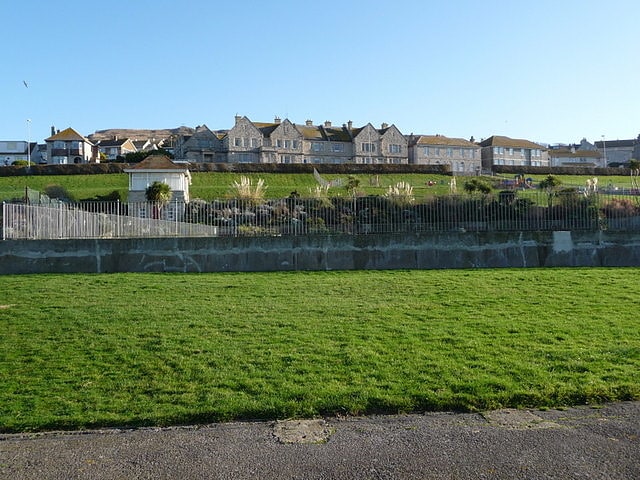
Park in England. Victoria Gardens is a public garden, located at Underhill, Isle of Portland, Dorset, England. It is found close to Fortuneswell village and overlooks both Victoria Square and Chiswell. The gardens, which were created to mark the 1897 Diamond Jubilee of Queen Victoria, have remained a focal point since their opening in 1904.
The gardens are made up of grassed and formal bedding areas, with a large rockery running along its centre. There is a children's play area, tennis courts and a bowling green managed by the Portland Victoria Bowls Club.[13]
Underhill Methodist Church

Methodist church in England. Underhill Methodist Church is a Methodist Church, opened in 1899, located in Fortuneswell, on the Isle of Portland, Dorset. It was built between 1898–1899, replacing a 1793 chapel built by Robert Carr Brackenbury, the founder of Methodism on Portland. The church remains active to date, as part of the Portland Methodist Circuit, alongside Easton Methodist Church.[14]
Verne High Angle Battery
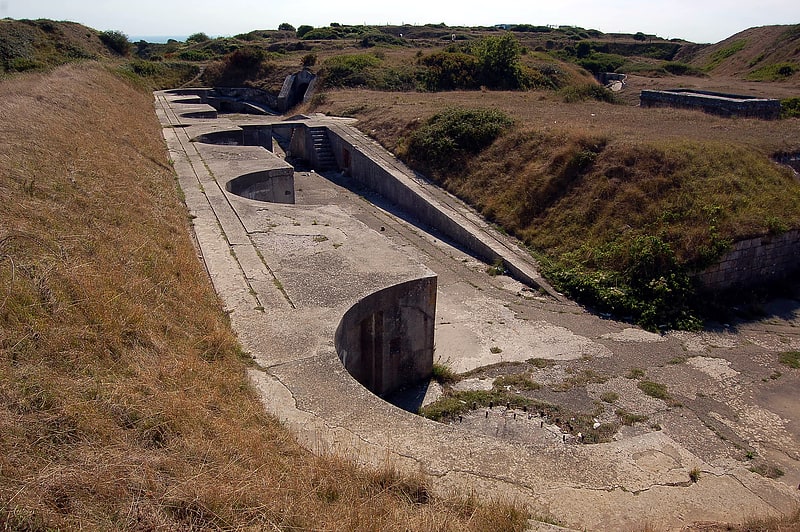
Monument in England. The Verne High Angle Battery is a former 19th-century gun battery on the Isle of Portland in Dorset, England. Situated close to the Verne Citadel, the battery is Grade II Listed, and forms part of the citadel's scheduled monument status. The battery has become a tourist attraction, while the battery's tunnels are often referred to by their local name 'Ghost Tunnels'.[15]
Old Lower Lighthouse
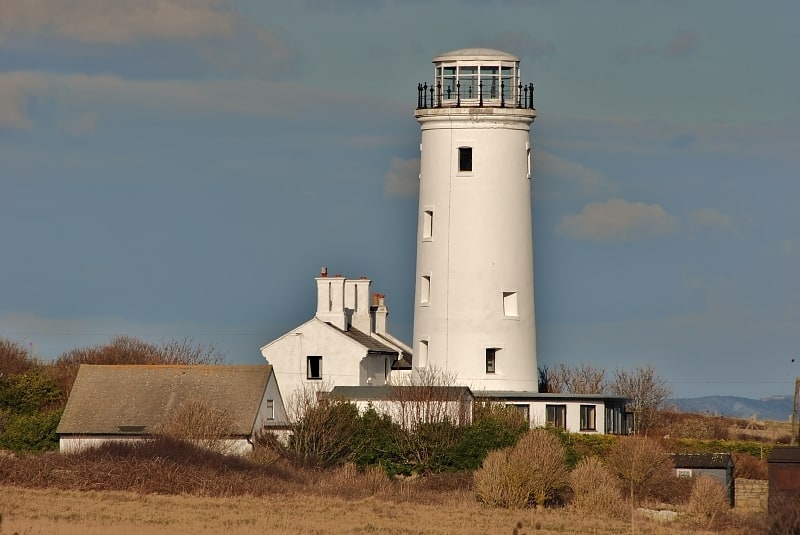
Lighthouse. The Old Lower Lighthouse is a disused 19th-century lighthouse on the Isle of Portland, Dorset, southern England. It is located along the eastern side of Portland Bill. The lighthouse, including its boundary walls and coastguard house, became Grade II Listed in September 1978.
Working alongside the Old Higher Lighthouse from 1716, the lower lighthouse has subsequently been rebuilt twice, once in 1789 (when it became the first working lighthouse to have its light intensified by lenses and again in 1869. The lighthouse seen today was built in 1869 and has been the home of the Portland Bird Observatory since 1961.[16]
St George's Church
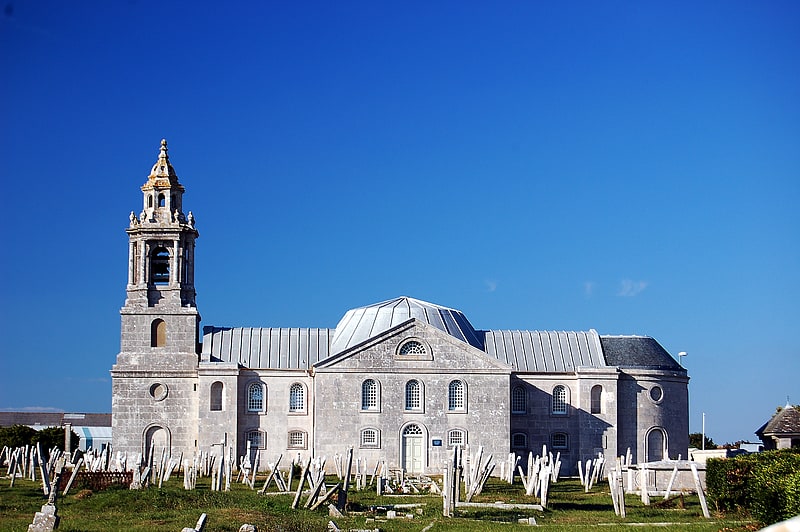
Church in England. St George's Church is a Church of England church on the Isle of Portland, built between 1754 and 1766 to replace St. Andrew's which had fallen into disuse and was no longer suitable as a place of worship.
During the 1960s a restoration of the church took place under the stewardship of a group formed to protect the church. It then came under the care of the Churches Conservation Trust, which continues to the present. No longer retained for regular worship, services are nevertheless held twice annually, on St George's Day and Christmas Day.[17]
St Andrew
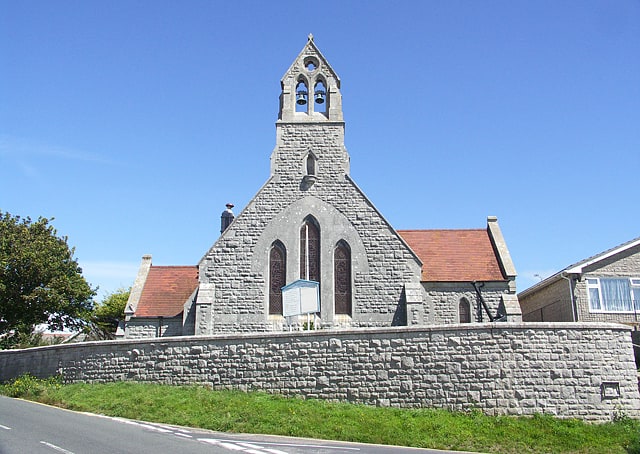
The Avalanche Memorial Church, also known as the Church of St Andrew, is a Church of England church in Southwell, on the Isle of Portland, Dorset, England. It was built in 1879 and remains active as part of the Portland Parish. The church, along with its boundary wall, has been a Grade II Listed building since September 1978.
The church was designed C.R. George Crickmay in an early English style. Built by Lynham and Bayliss of Portland, it was completed in 1879 and consecrated by the Bishop of Salisbury on 3 July. The church is not to be confused with the ruins of Portland's first parish church, the 13th century St Andrew's Church.[18]
Address: Avalanche Rd, DT5 2EQ Portland
Blacknor Fort
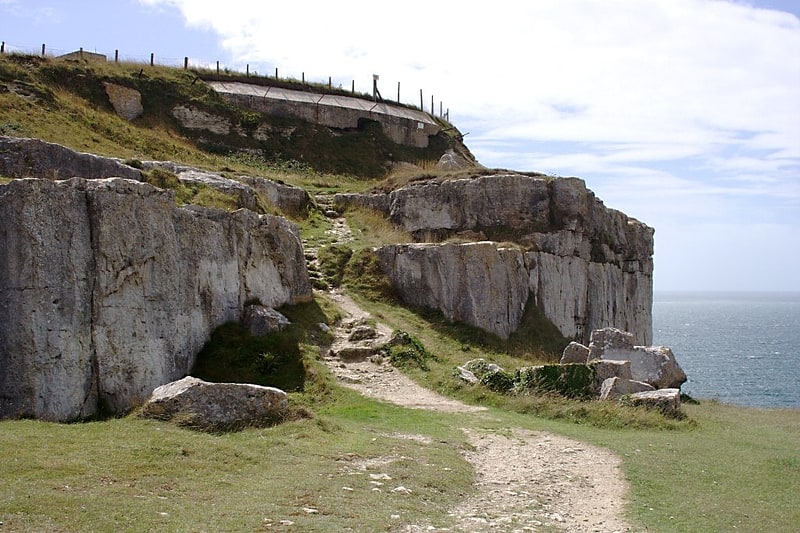
Historical landmark in England. Blacknor Fort is a 20th-century fort on the Isle of Portland, Dorset, England. It is located at Blacknor Point on the western side of Portland, close to Weston village.[19]
Verne Citadel
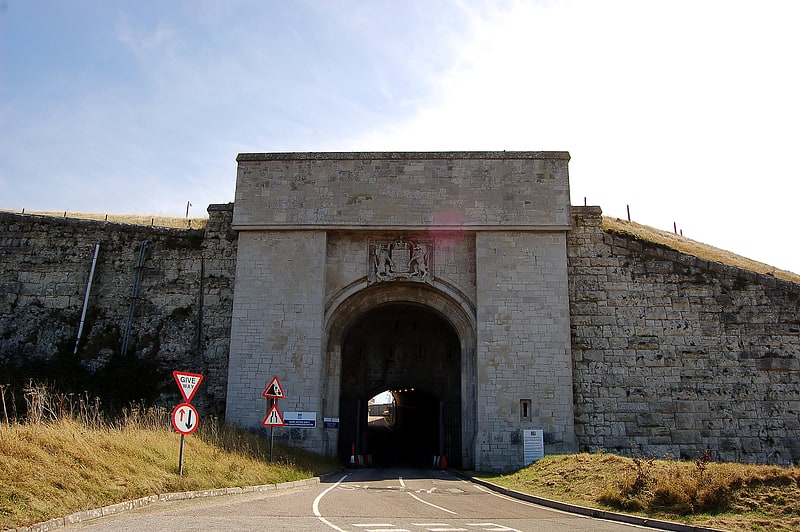
Verne Citadel is a 19th-century citadel on the Isle of Portland, Dorset, England. Located on the highest point of Portland, Verne Hill, it sits in a commanding position overlooking Portland Harbour, which it was built to defend. It later became HM Prison The Verne in 1949.[20]
Royal Manor Theatre

Theatre in England. Royal Manor Theatre is a theatre located in Fortuneswell, Isle of Portland, Dorset, England. Formerly a Methodist chapel, the building was later converted into the Royal Manor Theatre, which opened in 1978.[21]
Address: 138A Fortuneswell, DT5 1LT Isle of Portland
Folly Pier
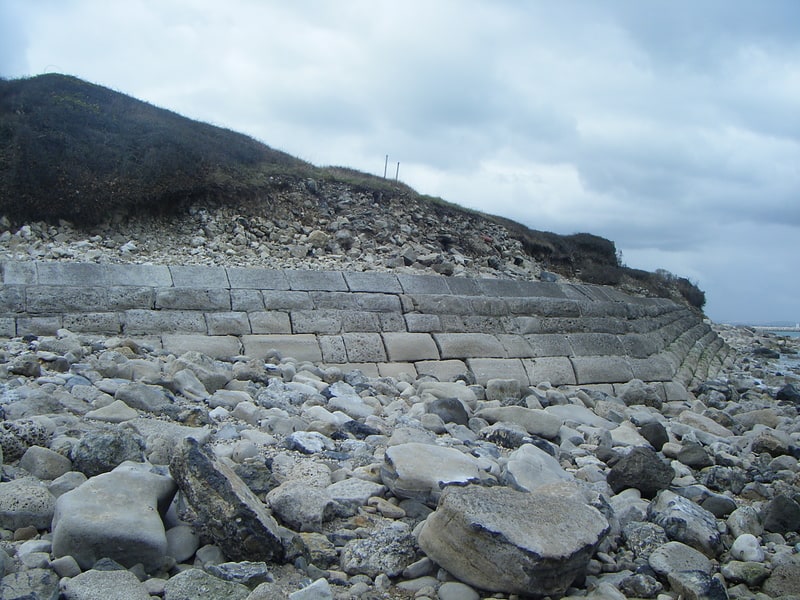
Folly Pier is a disused stone shipping quay, located on the Isle of Portland, Dorset, England; part of the Jurassic Coast. It is found on the east side of the island within the area of East Weares. Other piers within the area include King's Pier and Durdle Pier respectively. Folly Pier dates from the 17th century.[22]
St George's Centre

School in Easton, England. St George's Centre is a former school, built in the 19th century, and now a community information and activity centre on the Isle of Portland, Dorset, England. It is located in the area of Reforne, near the village of Easton. Both the centre and its community hall, which was formerly the school assembly hall, have been a Grade II listed since 1978.[23]
St John's Church
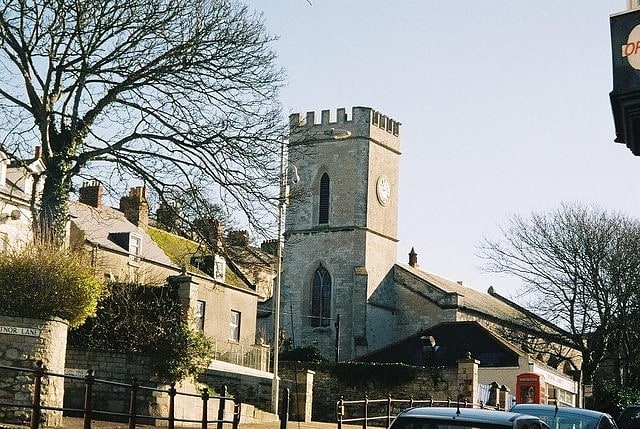
Episcopal church in England. St. John's Church is a Anglican Church of England church in Fortuneswell, on the Isle of Portland, Dorset. It was built between 1838–40 and has been a Listed Grade II building since January 1951. The churchyard walls, gate piers, railings, and steps of St. John's Church, dating from 1839–40, became Grade II Listed in September 1978. At this same time, two headstone monuments, about 5 metres north east from the west tower of the church became Grade II Listed.
Designed by Edward Mondey or Charles Wallis, the church cost £2,315. Built of Portland stone, the church has a Gothic design in Commissioners' Early English style. It has also been described as Norman in its architecture.
The church remains active, as part of the Portland Parish - a host of three churches; St John's Church (St John the Baptist), All Saints Church and the Avalanche Memorial Church (St Andrew's Church).[24]
Governor's Community Garden
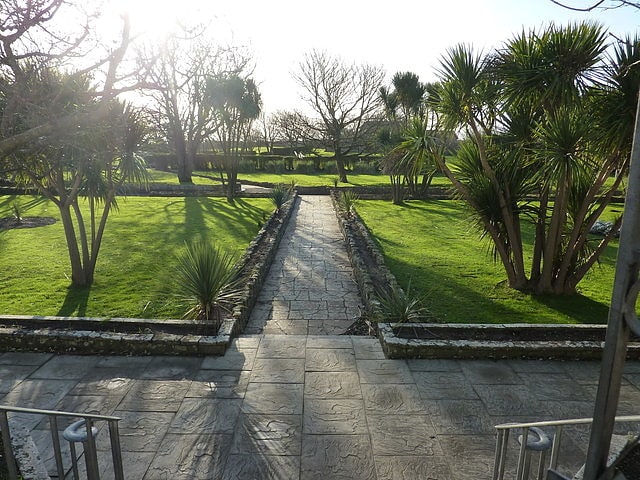
Community garden in Grove, England. Governor's Community Garden is a public garden, located on the Isle of Portland, Dorset, England. It is found within The Grove village, opposite the site of HM Prison Portland.[25]
Pennsylvania Castle
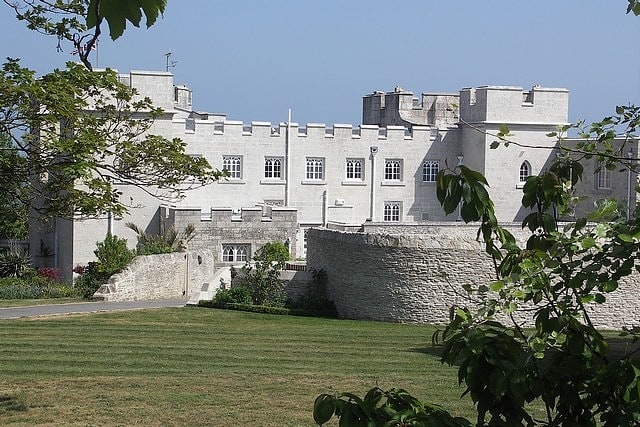
Pennsylvania Castle is a Gothic Revival mansion on the Isle of Portland, Dorset, England. It is located in Wakeham and overlooks Church Ope Cove. The castle is Grade II Listed, as is the adjacent gatehouse and lodges, which are now in separate ownership.
After becoming a hotel in 1950, the castle reverted to being a private residence in the 1990s. It is now hired out for functions and events, and is Portland's most expensive residential property. The castle, built of Portland stone, was originally a rectangular block until it was extended in the 20th century. It also has projecting corner turrets, embattled parapets and a circular tower.[26]
Address: Pennsylvania Road, Isle of Portland
Durdle Pier
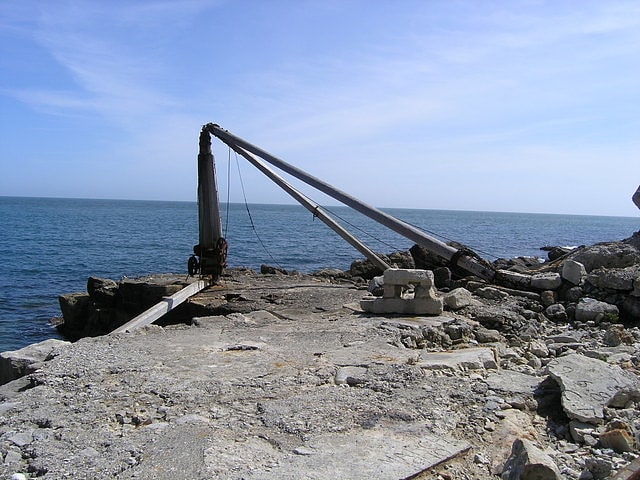
Historical landmark in England. Durdle Pier is a disused 17th-century stone shipping quay, located on the Isle of Portland, Dorset, England; part of the Jurassic Coast. It is found close by Yeolands Quarry, on the east side of the island within the area of East Weares and Penn's Weare.[27]
Castletown D-Day Centre
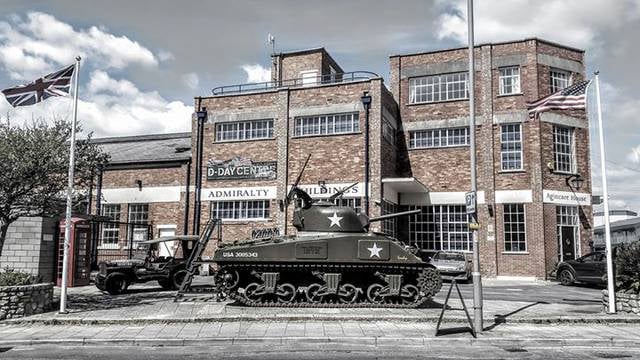
Military museum, History museum, Museum
Address: Admiralty Buildings, Isle of Portland
All Saints Church
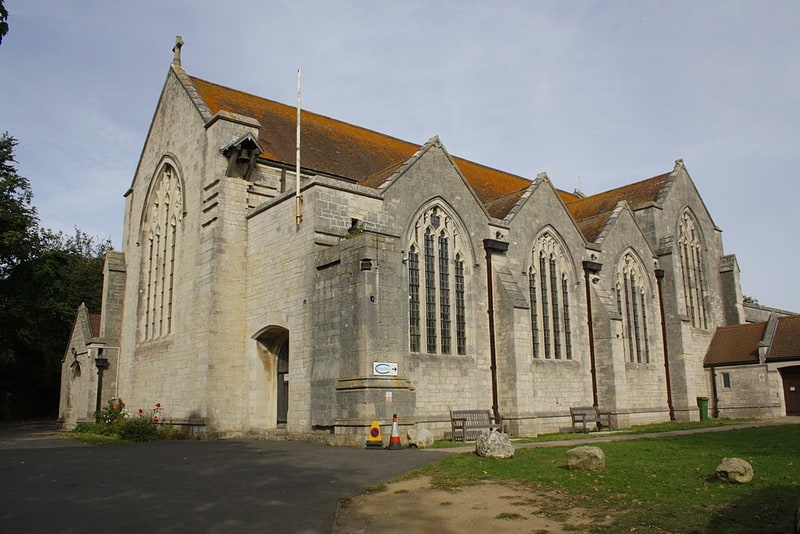
Episcopal church in Easton, England. All Saints Church is a Church of England church in Easton, on the Isle of Portland, Dorset. It was consecrated in 1917 and has been a Listed Grade II building since September 1978. The church succeeded to the rights, privileges, registers and silver of the St George's Church. It has been described as the finest ecclesiastical building on Portland – though somewhat hidden at its position. The church remains active to date, as part of the Portland Parish - a host of three churches; St. John's Church, All Saints Church and the Avalanche Memorial Church.[28]
Address: 1 Straits, DT5 1HG Isle of Portland
Old Higher Lighthouse

Lighthouse in England. The Old Higher Lighthouse is a disused 19th-century lighthouse on the Isle of Portland, Dorset, southern England. It is located at Branscombe Hill on the west side of Portland, overlooking Portland Bill. The lighthouse is Grade II Listed.[29]
St Peter's Church
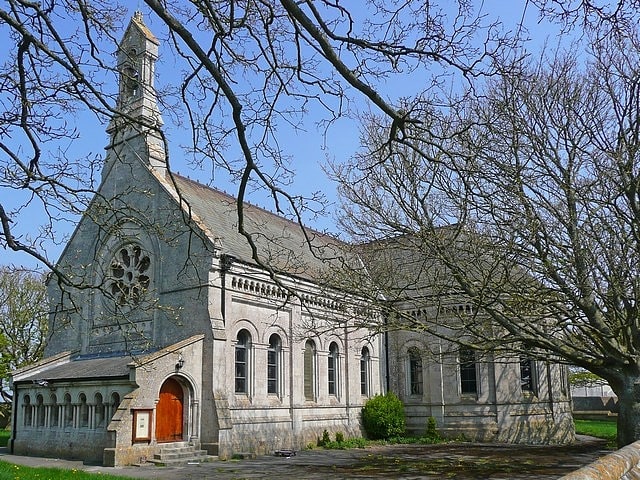
Building. St. Peter's Church is a former Church of England church in The Grove, on the Isle of Portland, Dorset. Designed by Major-General Sir Edmund Du Cane, the church was built in 1870-72 and is now a Grade II* Listed building. The gate piers and boundary walls to the north and west of the church are also Grade II Listed, along with the church's vicarage. St. Peter's Church is included on English Heritage's "Heritage at Risk" register.[30]
Jurassica
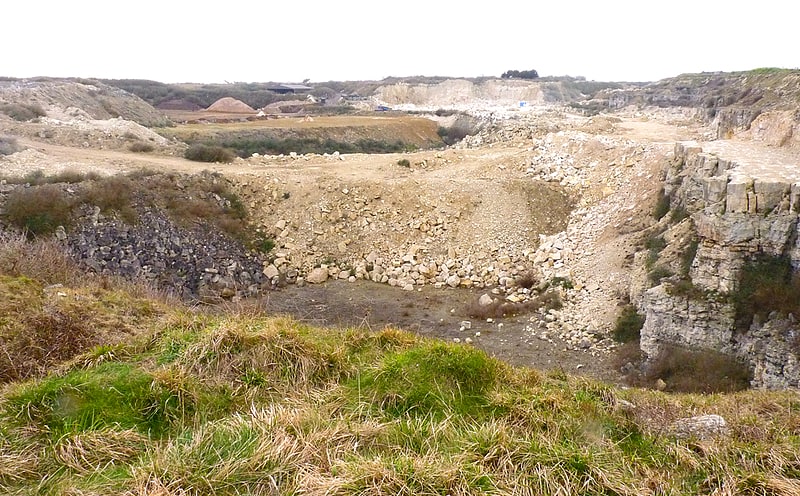
Amusement park. Jurassica was a planned visitor attraction in a disused quarry on the Isle of Portland, near Weymouth in Dorset, southern England. It was based on the Jurassic Coast, a World Heritage Site, and as a subterranean geological park, would have largely presented the prehistoric world. The attraction's location was chosen as Yeolands Quarry, a now disused quarry that was operational until the 21st century by Portland Stone Ltd. The quarry is 36 metres deep, 90 metres wide, and is on the eastern side of the island just south of The Grove village.[31]
Inner Pierhead Fort
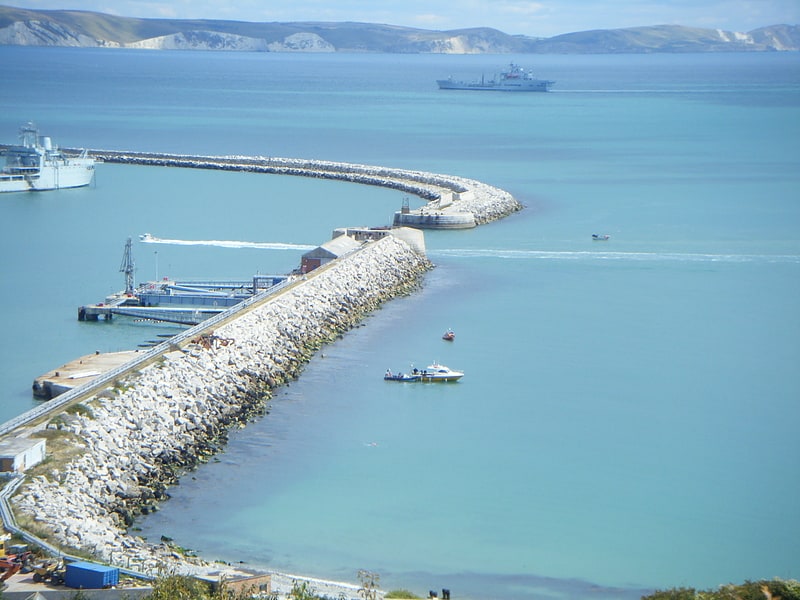
Inner Pierhead Fort is a 19th-century fort built to defend Portland Harbour at the Isle of Portland, Dorset, England. It is positioned on the end of the inner breakwater, which abuts from the former dockyard of HMNB Portland. The fort was constructed between 1859-1862, and is 100 ft in diameter. The inner breakwater, including the fort, became Grade II Listed in 1978.[32]
RAF Portland
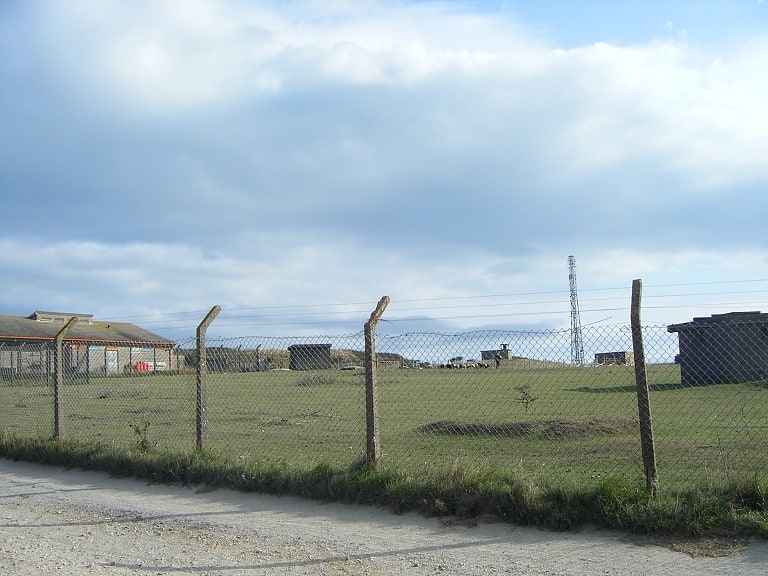
Farm in England. RAF Portland is a former Royal Air Force and ROTOR radar station on the Isle of Portland, Dorset, England. Located close to the Verne Citadel and East Cliff, the station was established in the 1950s as part of a nationwide air defence radar system built by the British Government during the Cold War. The station became a scheduled monument in 2004 and is now the site of the community farm, Fancy's Family Farm.[33]
Address: Glacis, New Ground, Isle of Portland
East Weare Battery
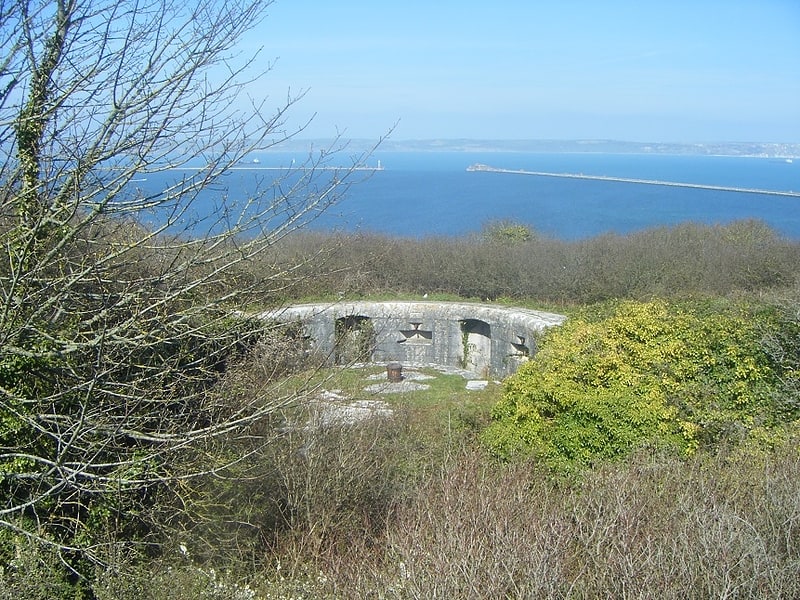
Historical landmark in England. East Weare Battery is a former 19th-century gun battery to the east of the Verne Citadel on the Isle of Portland in Dorset, England. The battery was built in the 1860s as a result of the Royal Commission to guard the new Portland harbour and Royal Navy institutions on the island. Five open batteries were built housing 20 9" and 10" RMLs. After 1877 the batteries were designated by letter 'A' to 'E'.
In 1900 the batteries were re-armed with more modern breech loading guns. 'A' battery received two 9.2 inch Breech Loading (BL) guns and 'B' battery received three BL 6 inch Mk VII guns on Central Pivot Mk II mounts. By 1919 the 6-inch guns had been removed, but the 9.2-inch guns remained in place until the dissolution of Coast Artillery in 1956.
The site was then used for training by the Royal Navy, which has damaged some of the gun positions. The batteries are derelict and there is no public access. Parts of the batteries are now listed as Ancient Monuments by Historic England.[34]